Glittering Frisbee Galaxy: This Image From Hubble’s Shows A Section Of A Spiral Galaxy Located About

Glittering Frisbee Galaxy: This image from Hubble’s shows a section of a spiral galaxy located about 50 million light-years from Earth. We tend to think of spiral galaxies as massive and roughly circular celestial bodies, so this glittering oval does not immediately appear to fit the visual bill. What’s going on? Imagine a spiral galaxy as a circular frisbee spinning gently in space. When we see it face on, our observations reveal a spectacular amount of detail and structure. However, the galaxy frisbee is very nearly edge-on with respect to Earth, giving it an appearance that is more oval than circular. The spiral arms, which curve out from the galaxy’s dense core, can just about be seen. Although spiral galaxies might appear static with their picturesque shapes frozen in space, this is very far from the truth. The stars in these dramatic spiral configurations are constantly moving as they orbit around the galaxy’s core, with those on the inside making the orbit faster than those sitting further out. This makes the formation and continued existence of a spiral galaxy’s arms something of a cosmic puzzle, because the arms wrapped around the spinning core should become wound tighter and tighter as time goes on - but this is not what we see. This is known as the winding problem. Image credit: ESA/Hubble & NASA For more information on this image, visit: https://go.nasa.gov/2niODGL
More Posts from Maevetheeuropan and Others
Okay now that I’m starting to get my ass in gear for astrophotography, I’d love it if some of y’all sated my need for attention and followed my instagram! I will return the favor of course
It’s mostly just space pictures, dogs, me, hiking stuff and lab stuff


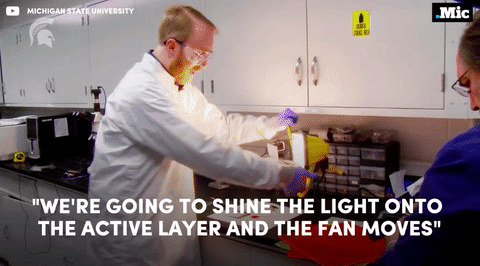

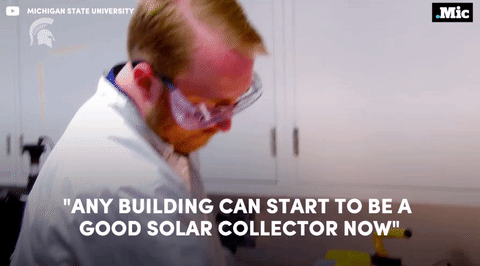
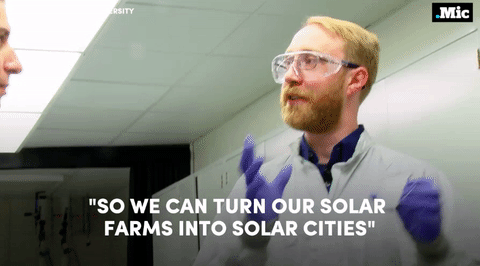




this is a massive step forward for renewable energy (x) | follow @the-future-now
Solar System: Things to Know This Week
We love Lucy—our spacecraft that will visit the ancient Trojan asteroids near Jupiter, that is. This week, let us count the ways this 2021 mission could revolutionize what we know about the origins of Earth and ourselves.
1. Lucky Lucy

Earlier this year, we selected the Lucy mission to make the first-ever visit to a group of asteroids known as the Trojans. This swarm of asteroids orbits in two loose groups around the Sun, with one group always ahead of Jupiter in its path, and the other always behind. The bodies are stabilized by the Sun and Jupiter in a gravitational balancing act, gathering in locations known as Lagrange points.
2. Old. Really, Really Old

Jupiter’s swarms of Trojan asteroids may be remnants of the material that formed our outer planets more than 4 billion years ago—so these fossils may help reveal our most distant origins. “They hold vital clues to deciphering the history of the solar system,” said Dr. Harold F. Levison, Lucy principal investigator from Southwest Research Institute (SwRI) in Boulder, Colorado.
3. A Link to The Beatles

Lucy takes its name from the fossilized human ancestor, called “Lucy” by her discoverers, whose skeleton provided unique insight into humanity’s evolution. On the night it was discovered in 1974, the team’s celebration included dancing and singing to The Beatles’ song “Lucy In The Sky With Diamonds.” At some point during that evening, expedition member Pamela Alderman named the skeleton “Lucy,” and the name stuck. Jump ahead to 2013 and the mission’s principal investigator, Dr. Levison, was inspired by that link to our beginnings to name the spacecraft after Lucy the fossil. The connection to The Beatles’ song was just icing on the cake.
4. Travel Itinerary
One of two missions selected in a highly competitive process, Lucy will launch in October 2021. With boosts from Earth’s gravity, it will complete a 12-year journey to seven different asteroids: a Main Belt asteroid and six Trojans.
5. Making History

No other space mission in history has been launched to as many different destinations in independent orbits around the Sun. Lucy will show us, for the first time, the diversity of the primordial bodies that built the planets.
6. What Lies Beneath
Lucy’s complex path will take it to both clusters of Trojans and give us our first close-up view of all three major types of bodies in the swarms (so-called C-, P- and D-types). The dark-red P- and D-type Trojans resemble those found in the Kuiper Belt of icy bodies that extends beyond the orbit of Neptune. The C-types are found mostly in the outer parts of the Main Belt of asteroids, between the orbits of Mars and Jupiter. All of the Trojans are thought to be abundant in dark carbon compounds. Below an insulating blanket of dust, they are probably rich in water and other volatile substances.
7. Pretzel, Anyone?

This diagram illustrates Lucy’s orbital path. The spacecraft’s path (green) is shown in a slowly turning frame of reference that makes Jupiter appear stationary, giving the trajectory its pretzel-like shape.
8. Moving Targets

This time-lapsed animation shows the movements of the inner planets (Mercury, brown; Venus, white; Earth, blue; Mars, red), Jupiter (orange), and the two Trojan swarms (green) during the course of the Lucy mission.
9. Long To-Do List
Lucy and its impressive suite of remote-sensing instruments will study the geology, surface composition, and physical properties of the Trojans at close range. The payload includes three imaging and mapping instruments, including a color imaging and infrared mapping spectrometer and a thermal infrared spectrometer. Lucy also will perform radio science investigations using its telecommunications system to determine the masses and densities of the Trojan targets.
10. Dream Team
Several institutions will come together to successfully pull off this mission. The Southwest Research Institute in Boulder, Colorado, is the principal investigator institution. Our Goddard Space Flight Center will provide overall mission management, systems engineering, and safety and mission assurance. Lockheed Martin Space Systems in Denver will build the spacecraft. Instruments will be provided by Goddard, the Johns Hopkins Applied Physics Laboratory and Arizona State University. Discovery missions are overseen by the Planetary Missions Program Office at our Marshall Space Flight Center in Huntsville, Alabama, for our Planetary Science Division.
Make sure to follow us on Tumblr for your regular dose of space: http://nasa.tumblr.com






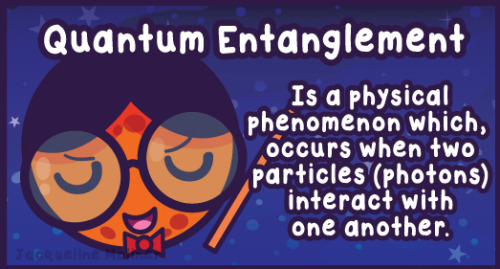
Here’s a comic on something flaming hot!
This week’s comic: Firewall Theory
http://www.sciencealert.com/try-to-escape-a-black-hole-and-you-ll-be-burnt-to-a-crisp-new-paper-cautions
https://profmattstrassler.com/articles-and-posts/relativity-space-astronomy-and-cosmology/black-holes/black-hole-information-paradox-an-introduction/
Getting to Mars: 4 Things We’re Doing Now
We’re working hard to send humans to Mars in the 2030s. Here are just a few of the things we’re doing now that are helping us prepare for the journey:
1. Research on the International Space Station

The International Space Station is the only microgravity platform for the long-term testing of new life support and crew health systems, advanced habitat modules and other technologies needed to decrease reliance on Earth.

When future explorers travel to the Red Planet, they will need to be able to grow plants for food, atmosphere recycling and physiological benefits. The Veggie experiment on space station is validating this technology right now! Astronauts have grown lettuce and Zinnia flowers in space so far.

The space station is also a perfect place to study the impacts of microgravity on the human body. One of the biggest hurdles of getting to Mars in ensuring that humans are “go” for a long-duration mission. Making sure that crew members will maintain their health and full capabilities for the duration of a Mars mission and after their return to Earth is extremely important.

Scientists have solid data about how bodies respond to living in microgravity for six months, but significant data beyond that timeframe had not been collected…until now! Former astronaut Scott Kelly recently completed his Year in Space mission, where he spent a year aboard the space station to learn the impacts of microgravity on the human body.
A mission to Mars will likely last about three years, about half the time coming and going to Mars and about half the time on the Red Planet. We need to understand how human systems like vision and bone health are affected and what countermeasures can be taken to reduce or mitigate risks to crew members.
2. Utilizing Rovers & Tech to Gather Data

Through our robotic missions, we have already been on and around Mars for 40 years! Before we send humans to the Red Planet, it’s important that we have a thorough understanding of the Martian environment. Our landers and rovers are paving the way for human exploration. For example, the Mars Reconnaissance Orbiter has helped us map the surface of Mars, which will be critical in selecting a future human landing site on the planet.

Our Mars 2020 rover will look for signs of past life, collect samples for possible future return to Earth and demonstrate technology for future human exploration of the Red Planet. These include testing a method for producing oxygen from the Martian atmosphere, identifying other resources (such as subsurface water), improving landing techniques and characterizing weather, dust and other potential environmental conditions that could affect future astronauts living and working on Mars.

We’re also developing a first-ever robotic mission to visit a large near-Earth asteroid, collect a multi-ton boulder from its surface and redirect it into a stable orbit around the moon. Once it’s there, astronauts will explore it and return with samples in the 2020s. This Asteroid Redirect Mission (ARM) is part of our plan to advance new technologies and spaceflight experience needed for a human mission to the Martian system in the 2030s.
3. Building the Ride
Okay, so we’ve talked about how we’re preparing for a journey to Mars…but what about the ride? Our Space Launch System, or SLS, is an advanced launch vehicle that will help us explore beyond Earth’s orbit into deep space. SLS will be the world’s most powerful rocket and will launch astronauts in our Orion spacecraft on missions to an asteroid and eventually to Mars.

In the rocket’s initial configuration it will be able to take 154,000 pounds of payload to space, which is equivalent to 12 fully grown elephants! It will be taller than the Statue of Liberty and it’s liftoff weight will be comparable to 8 fully-loaded 747 jets. At liftoff, it will have 8.8 million pounds of thrust, which is more than 31 times the total thrust of a 747 jet. One more fun fact for you…it will produce horsepower equivalent to 160,000 Corvette engines!

Sitting atop the SLS rocket will be our Orion spacecraft. Orion will be the safest most advanced spacecraft ever built, and will be flexible and capable enough to carry humans to a variety of destinations. Orion will serve as the exploration vehicle that will carry the crew to space, provide emergency abort capability, sustain the crew during space travel and provide safe re-entry from deep space return velocities.
4. Making it Sustainable
When humans get to Mars, where will they live? Where will they work? These are questions we’ve already thought about and are working toward solving. Six partners were recently selected to develop ground prototypes and/or conduct concept studies for deep space habitats.

These NextSTEP habitats will focus on creating prototypes of deep space habitats where humans can live and work independently for months or years at a time, without cargo supply deliveries from Earth.

Another way that we are studying habitats for space is on the space station. In June, the first human-rated expandable module deployed in space was used. The Bigelow Expandable Activity Module (BEAM) is a technology demonstration to investigate the potential challenges and benefits of expandable habitats for deep space exploration and commercial low-Earth orbit applications.
Our journey to Mars requires preparation and research in many areas. The powerful new Space Launch System rocket and the Orion spacecraft will travel into deep space, building on our decades of robotic Mars explorations, lessons learned on the International Space Station and groundbreaking new technologies.
Make sure to follow us on Tumblr for your regular dose of space: http://nasa.tumblr.com
LOL oh @claraxbarton you know me SO well!
I’ve totally got the first ep on my DVR - I just haven’t had time to watch it lol
@maevemauvaise !!!!!!!!!!!!
SpaceX Sends Super Science to Space Station!
SpaceX is scheduled to launch its Dragon spacecraft PACKED with super cool research and technology to the International Space Station June 1 from Kennedy Space Center in Florida. New solar panels, investigations that study neutron stars and even fruit flies are on the cargo list. Let’s take a look at what other bits of science are making their way to the orbiting laboratory 250 miles above the Earth…

New solar panels to test concept for more efficient power source
Solar panels generate power well, but they can be delicate and large when used to power a spacecraft or satellites. This technology demonstration is a solar panel concept that is lighter and stores more compactly for launch than the solar panels currently in use.

Roll-Out Solar Array (ROSA) has solar cells on a flexible blanket and a framework that rolls out like a tape measure and snap into place, and could be used to power future space vehicles.
Investigation to Study Composition of Neutron Stars
Neutron stars, the glowing cinders left behind when massive stars explode as supernovas, contain exotic states of matter that are impossible to replicate in any lab. NICER studies the makeup of these stars, and could provide new insight into their nature and super weird behavior.

Neutron stars emit X-ray radiation, enabling the NICER technology to observe and record information about its structure, dynamics and energetics.
Experiment to Study Effect of New Drug on Bone Loss
When people and animals spend lots of space, they experience bone density loss. In-flight exercise can prevent it from getting worse, but there isn’t a therapy on Earth or in space that can restore bone that is already lost.

The Systemic Therapy of NELL-1 for osteoporosis (Rodent Research-5) investigation tests a new drug that can both rebuild bone and block further bone loss, improving health for crew members.
Research to Understand Cardiovascular Changes
Exposure to reduced gravity environments can result in cardiovascular changes such as fluid shifts, changes in total blood volume, heartbeat and heart rhythm irregularities, and diminished aerobic capacity.

The Fruit Fly Lab-02 study will use the fruit fly (Drosophila melanogaster) to better understand the underlying mechanisms responsible for the adverse effects of prolonged exposure to microgravity on the heart. Fruit flies are effective model organisms, and we don’t mean on the fashion runway. Want to see how 1,000 bottles of fruit flies were prepared to go to space? Check THIS out.
Space Life-Support Investigation
Currently, the life-support systems aboard the space station require special equipment to separate liquids and gases. This technology utilizes rotating and moving parts that, if broken or otherwise compromised, could cause contamination aboard the station.

The Capillary Structures investigation studies a new method of water recycling and carbon dioxide removal using structures designed in specific shapes to manage fluid and gas mixtures.
Earth-Observation Tools
Orbiting approximately 250 miles above the Earth’s surface, the space station provides pretty amazing views of the Earth. The Multiple User System for Earth Sensing (MUSES) facility hosts Earth-viewing instruments such as high-resolution digital cameras, hyperspectral imagers, and provides precision pointing and other accommodations.

This investigation can produce data that could be used for maritime domain awareness, agricultural awareness, food security, disaster response, air quality, oil and gas exploration and fire detection.
Watch the launch live HERE! For all things space station science, follow @ISS_Research on Twitter.
Make sure to follow us on Tumblr for your regular dose of space: http://nasa.tumblr.com

What caused this outburst of this star named V838 Mon? For reasons unknown, this star’s outer surface suddenly greatly expanded with the result that it became the brightest star in the entire Milky Way Galaxy in January 2002. Then, just as suddenly, it faded. A stellar flash like this had never been seen before – supernovas and novas expel matter out into space.
Although the V838 Mon flash appears to expel material into space, what is seen in the above GIF from the Hubble Space Telescope is actually an outwardly moving light echo of the bright flash.
In a light echo, light from the flash is reflected by successively more distant rings in the complex array of ambient interstellar dust that already surrounded the star. V838 Mon lies about 20,000 light years away toward the constellation of the unicorn (Monoceros), while the light echo above spans about six light years in diameter.
Credit: NASA, ESA
To discover more, visit: https://www.nasa.gov/multimedia/imagegallery/image_feature_2472.html
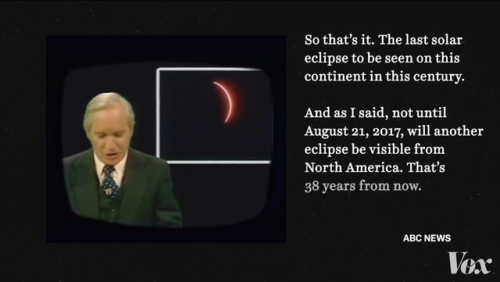
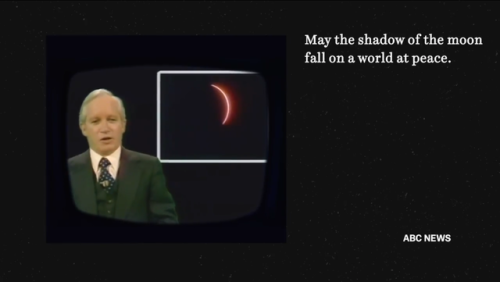
Hey! Just wondering, how did a solar eclipse prove the theory of relativity?
According to the theory of relativity space is not static. The movements of objects can change the structure of space.

In Einstein’s view, space is combined with another dimension - time - which creates universewide “fabric” called space-time. Object travel through this fabric, which can be warped, bent and twisted by the masses and motions of objects within space-time.
One prediction of general relativity was that light should not travel in a perfectly straight line. When traveling through space-time and approaching the gravitational field of a mass object, the light must bend-but not too much.
Then the English astronomer Sir Frank Watson Dyson proposed that the total solar eclipse of 1919 could prove, because the Sun would cross the bright Hyades star cluster. Star light would have to cross the gravitational field of the sun on the way to Earth, but would be visible due to the darkness of the eclipse. This would allow precise measurements of the positions displaced by the gravity of the stars in the sky.

Because of this, teams of researchers strategically positioned themselves in two locations that would initially provide the best conditions for observing the eclipse. One group stayed in Ilha do Príncipe, in São Tomé and Príncipe, and other researchers settled in Sobral, Ceará (Brazil).
Eddington, who led the experiment, first measured the “true” positions of the stars during January and February of 1919. In May, he went to remote Prince Island (in the Gulf of Guinea, on the west coast of Africa) to measure Positions of the stars during the eclipse, seen through the gravitational lens of the sun.

The total eclipse lasted about 6 minutes and 51 seconds, during those few minutes the astronomers captured several photos of the total eclipse. When Eddington returned to England, his data from Príncipe confirmed Einstein’s predictions.Eddington announced his discoveries on November 6, 1919.

Images: x ,x ,x ,x
-
 z0ruas liked this · 2 years ago
z0ruas liked this · 2 years ago -
 luncheon-aspic reblogged this · 2 years ago
luncheon-aspic reblogged this · 2 years ago -
 luncheon-aspic liked this · 2 years ago
luncheon-aspic liked this · 2 years ago -
 drachenstochter reblogged this · 2 years ago
drachenstochter reblogged this · 2 years ago -
 drachenstochter liked this · 2 years ago
drachenstochter liked this · 2 years ago -
 deadlysunlight reblogged this · 2 years ago
deadlysunlight reblogged this · 2 years ago -
 imatinyrobot liked this · 2 years ago
imatinyrobot liked this · 2 years ago -
 nikichidon liked this · 3 years ago
nikichidon liked this · 3 years ago -
 lesbomancy liked this · 3 years ago
lesbomancy liked this · 3 years ago -
 mistresstrevelyan reblogged this · 3 years ago
mistresstrevelyan reblogged this · 3 years ago -
 mistresstrevelyan liked this · 3 years ago
mistresstrevelyan liked this · 3 years ago -
 glacialdrip reblogged this · 5 years ago
glacialdrip reblogged this · 5 years ago -
 glacialdrip liked this · 5 years ago
glacialdrip liked this · 5 years ago -
 orothodoxanswers reblogged this · 5 years ago
orothodoxanswers reblogged this · 5 years ago -
 orothodoxanswers liked this · 5 years ago
orothodoxanswers liked this · 5 years ago -
 nyxxzy liked this · 5 years ago
nyxxzy liked this · 5 years ago -
 allofthepretty liked this · 5 years ago
allofthepretty liked this · 5 years ago -
 letscreatesomething-beautiful reblogged this · 5 years ago
letscreatesomething-beautiful reblogged this · 5 years ago -
 azurilmare reblogged this · 5 years ago
azurilmare reblogged this · 5 years ago -
 iashawke liked this · 6 years ago
iashawke liked this · 6 years ago -
 xphren liked this · 6 years ago
xphren liked this · 6 years ago -
 khaledxamoura liked this · 6 years ago
khaledxamoura liked this · 6 years ago -
 wachsurfer2018 liked this · 6 years ago
wachsurfer2018 liked this · 6 years ago -
 darkstarward reblogged this · 6 years ago
darkstarward reblogged this · 6 years ago -
 thunderapache-blog liked this · 6 years ago
thunderapache-blog liked this · 6 years ago -
 ouranien reblogged this · 6 years ago
ouranien reblogged this · 6 years ago -
 0racle0fdoom liked this · 6 years ago
0racle0fdoom liked this · 6 years ago -
 elbee122854 liked this · 7 years ago
elbee122854 liked this · 7 years ago -
 tomatoesandpears liked this · 7 years ago
tomatoesandpears liked this · 7 years ago -
 ayyeeequality liked this · 7 years ago
ayyeeequality liked this · 7 years ago -
 mercurialmidnight reblogged this · 7 years ago
mercurialmidnight reblogged this · 7 years ago -
 anmin-mesimu-blog liked this · 7 years ago
anmin-mesimu-blog liked this · 7 years ago -
 bad-andreas-s-blog liked this · 7 years ago
bad-andreas-s-blog liked this · 7 years ago -
 dichi71 liked this · 7 years ago
dichi71 liked this · 7 years ago -
 deadpansnaker liked this · 7 years ago
deadpansnaker liked this · 7 years ago -
 endlesstransitions reblogged this · 7 years ago
endlesstransitions reblogged this · 7 years ago -
 brendakrs reblogged this · 7 years ago
brendakrs reblogged this · 7 years ago -
 poteryalvmoskovskiy-zimy reblogged this · 7 years ago
poteryalvmoskovskiy-zimy reblogged this · 7 years ago